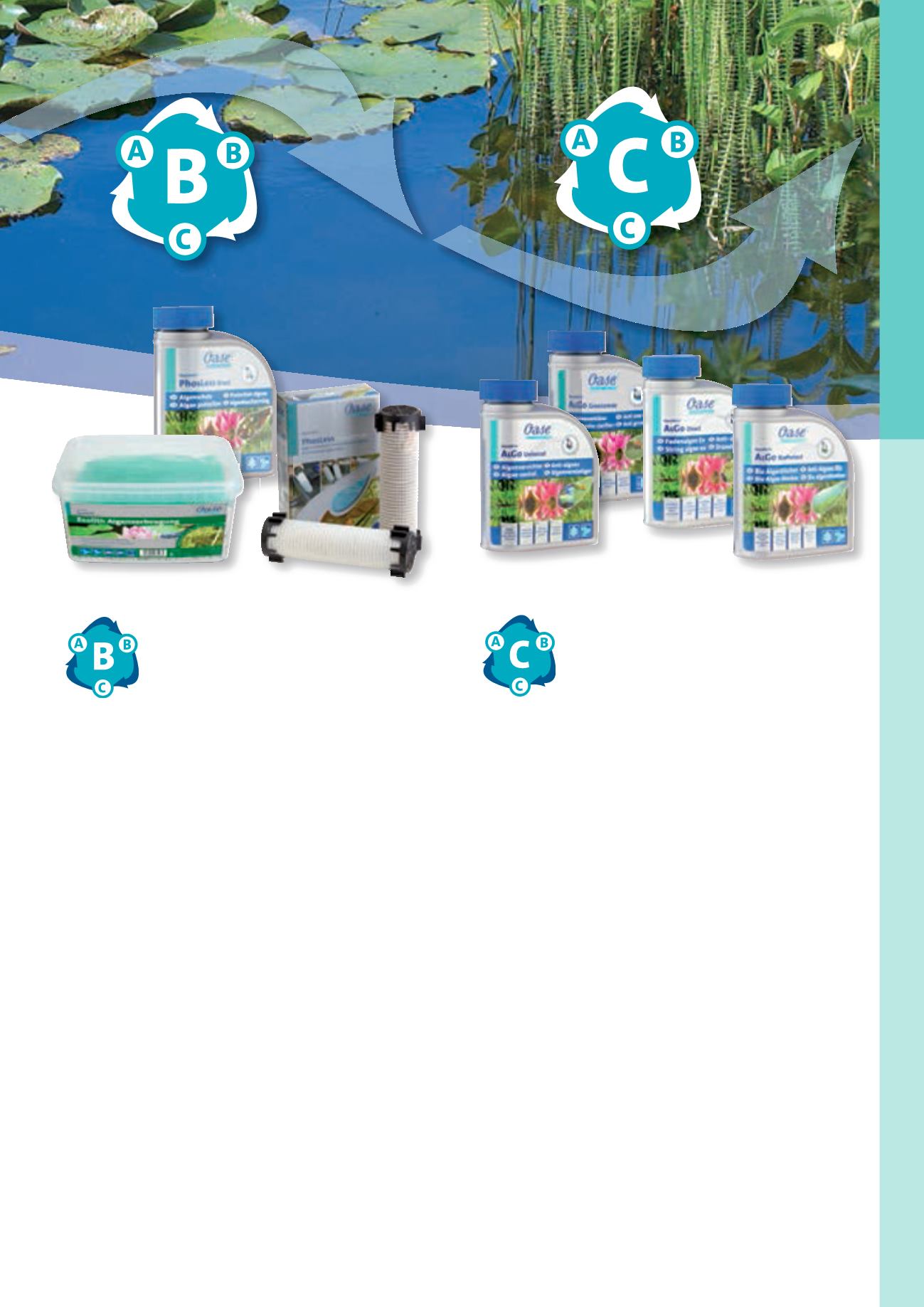
Garden ponds are usually subject to a lively nutrient
input. Particularly due to fish food considerable quan-
tities of nutrients are added, which can no longer be
adequately decomposed through the natural de-
composition processes. In this regard phosphate has
special significance, it is undoubtedly one of the most
important nutrient sources for algae growth. Especially
throughout the winter, after algae treatments and in
the case of constant phosphate input, the free availa-
bility in the pond water should be kept to a minimum.
Usually this restricts algae growth to a minimum level,
so that the use of pesticides can be omitted.
Nutrient binding of algae growth:
• Removal of phosphates
Î
PhosLess
• Removal of ammonium, nitrite, nitrate
Î
PondLith
• Withdrawal of excessive water hardness /
reduction of high pH values
Î
AquaHumin
Learn more on page 200 / 201.
B
If water stabilisation and nutrient limitation do not
succeed in containing algae growth, with the AlGo
products the right helpers are on hand. Correctly
dosed, the well-tolerated algaecide should be used in
the early morning hours and in the growth phases of
the algae. AlGo Bio Protect should be used for fol-
low-up care; the natural ingredients generate a barely
noticeable amber colouration of the water. This acts
as a light-protection filter that counter acts the set-
tlement of new algae. After algae treatment, removal
of the phosphates that have now been released is
also recommended.
Algae control:
• For green water (suspended algae)
Î
AlGo Greenaway*
• For string algae or other algae
Î
AlGo Universal*
• For local, limited string algae
Î
AlGo Direct*
• For prevention of algae growth
Î
AlGo Bio Protect
Learn more on page 203.
C
*Use biocides carefully. Always read the label and product information before use!
199
3 S
-
P T
& F M


